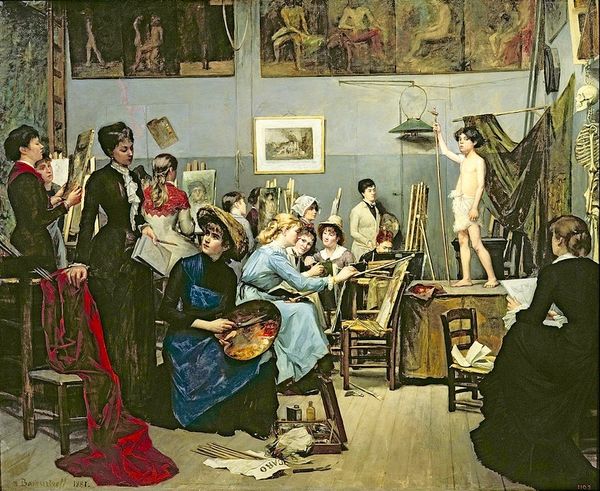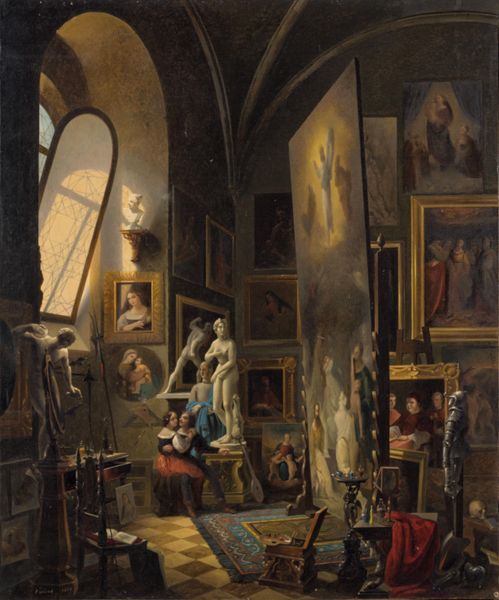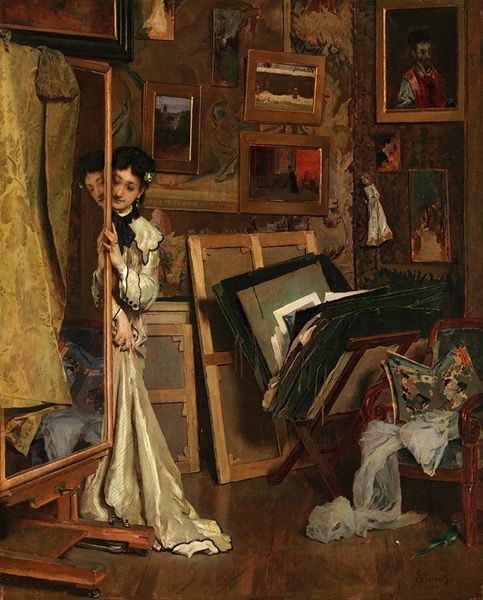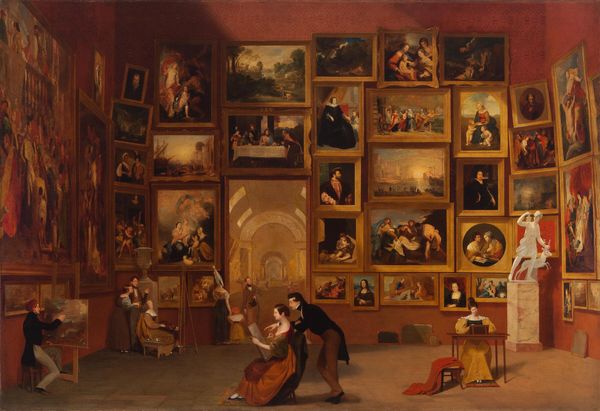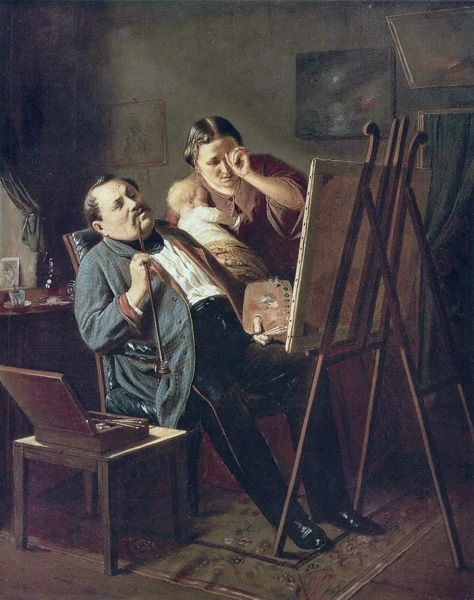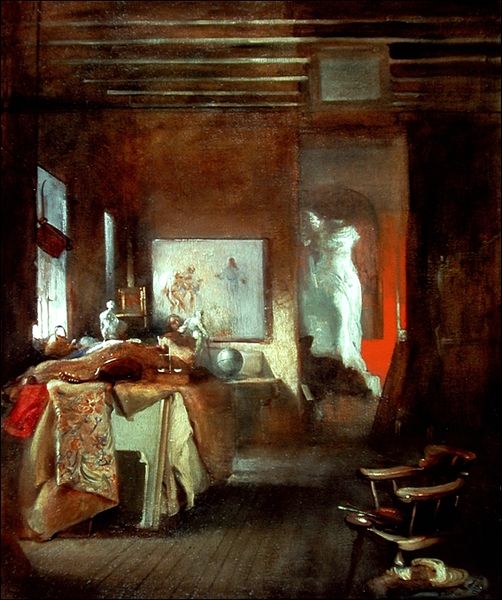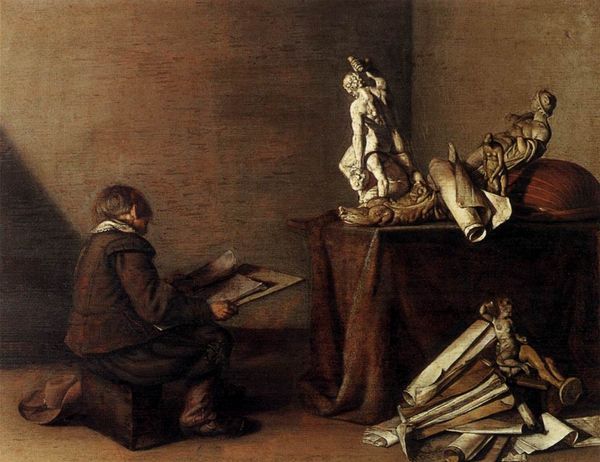
painting, oil-paint
#
portrait
#
painting
#
impressionism
#
oil-paint
#
intimism
#
genre-painting
#
academic-art
#
nude
#
mixed media
#
modernism
Copyright: Public domain
Curator: Welcome to this exploration of "Studio in Paris," painted by Jose Ferraz de Almeida Junior in 1880. It resides in a private collection, a snapshot of a painter's daily work. What strikes you first about it? Editor: It's a cluttered space, but there’s an undeniably vibrant energy! The composition is jam-packed with cultural references—the nude model as muse, a skeleton, studies tacked to the wall, paintings everywhere… Curator: Almeida Junior really captures the process of art-making itself, right down to the accoutrements: the potbelly stove presumably to warm the cold room and allow year round production, the rumpled fabrics beneath the model, a humble tortoise wandering the space... The abundance reflects the constant labor required to create and consume art in 19th century Paris. Editor: Yes! And those seemingly random items aren't random at all. The skeleton, for example, isn’t merely a prop. It’s a “memento mori,” a symbol urging contemplation of mortality. Juxtapose it against the idealized nude—the body as a transient vessel. What's so intriguing is that clash! Curator: And we mustn't forget that he is making clear choices on how to render the flesh and light as if capturing a slice of bourgeois life. This interior invites a critique of what we consider traditional portraiture with the figure presented in a state of undress; what commentary do you think it presents about who art can be by capturing everyday moments in these studios? Editor: Well, nude figures are certainly established symbols, associated with mythology and classical beauty, power even. Almeida Junior invites us into the creation process but on his own terms and perspective of beauty! Look at the three male figures and then back at her—is she objectified? A subject with her own story and presence? It is left unanswered and thus forces us to think! Curator: This certainly changes our engagement when we get to intimately participate as the "viewer in the studio." Editor: Precisely! And ultimately that tension between process and final product, objectification, meaning is what keeps this painting fascinating, so we can see our own meaning in the scene. Curator: I think what I see more is the ability to think about the conditions needed to produce work and that labor element. Editor: Interesting food for thought—for an everyday scene that holds some fascinating symbols and context. Thank you for offering a look into this art studio.
Comments
No comments
Be the first to comment and join the conversation on the ultimate creative platform.
